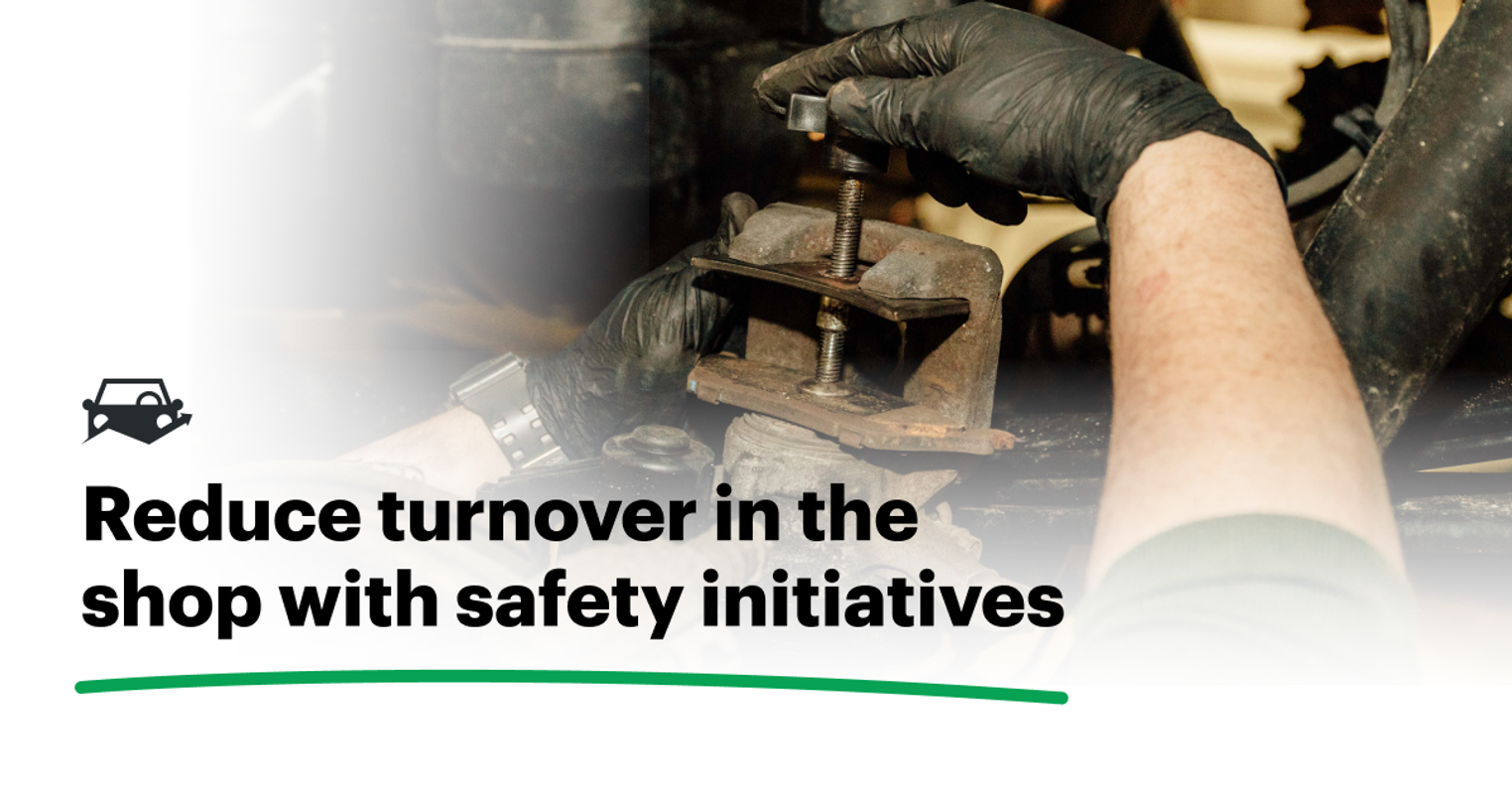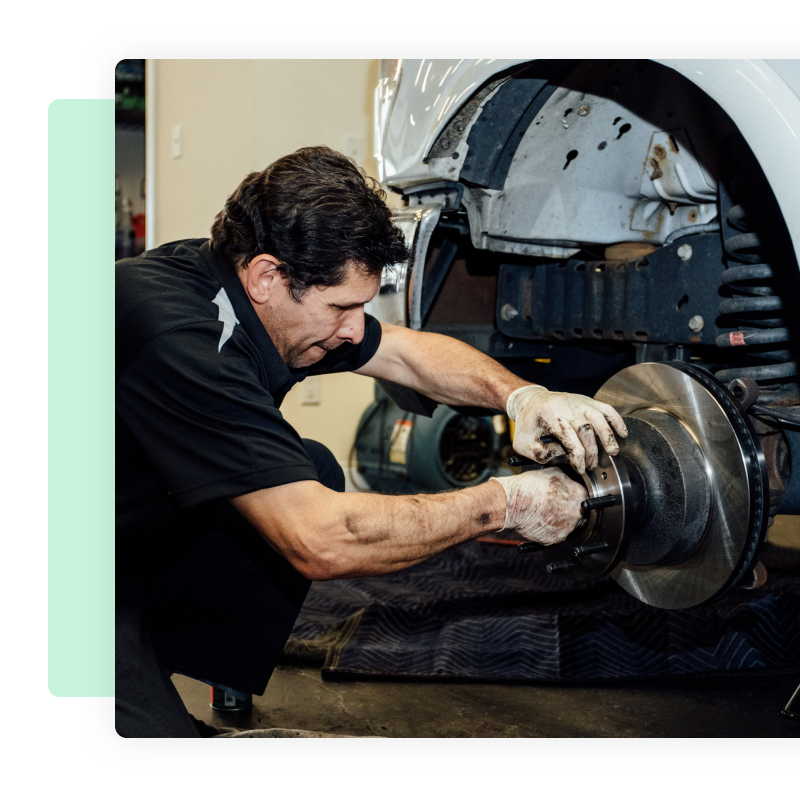Improving Mechanic Health and Retention with Shop Safety
Being a mechanic can take a significant toll on the body, and many opt to switch careers as they age. Fleets can help ease the physical stress their mechanics face by balancing workloads and using more ergonomic PPE, equipment and tools.
Apr 24, 2024
5 min read

Working as a mechanic is not just a job; it's a demanding profession that requires attention to detail and a significant amount of manual labor. Due to the wear and tear on the body associated with this profession, many mechanics consider alternative career paths as they age. According to the U.S. Bureau of Labor Statistics, “About 67,700 openings for automotive service technicians and mechanics are projected each year, on average, over the decade. Many of those openings are expected to result from the need to replace workers who transfer to different occupations or exit the labor force, such as to retire.”
Fleets can create a safer, more productive and engaging working environment for mechanics by providing ergonomic tools and personal protective equipment (PPE) and implementing strategies to balance workloads.
Getting the Right Tools and Equipment
With the average age of fleet mechanics resting around 42 years old, and with more than 90,000 fleet mechanic jobs open in the U.S. presently, taking the time to improve fleet shop safety — and the fleet safety policy as a whole — can greatly improve your chances at retaining quality mechanics.
Some fleets are already taking proactive measures to enhance productivity and retain fleet employees in their shops by offering sign-on bonuses and incentives and increasing base salaries, but a major part of fleet manager responsibilities is ensuring fleet safety, including comprehensive safety policies and ongoing fleet safety training to address potential hazards in the shop. Some of the most common injuries mechanics experience include:
- Burns, cuts and lacerations
- Strains, sprains and tears
- Eye injuries
Strains, sprains and tears make up a majority of injury types, according to the U.S. Bureau of Labor Statistics, with hands and back being the most affected areas of the body. Being struck by an object or equipment and exposure to harmful substances or environments are the leading causes of injury.
Investing in high-quality, ergonomically designed tools and equipment can significantly reduce the risk of injuries in the shop. Some examples include:
- User-friendly hand tools, such as those designed to keep wrists in a neutral posture
- Anti-vibration gloves
- High-quality back, elbow, wrist, knee and shoulder supports
- High-quality eye protection designed for minimal discomfort
- Lifts, hoists, brake lathes and other lift-support equipment
- Mobile carts for transporting numerous or heavy parts
We used to waste a lot of time taking front rotors off the trucks. It’s a time-consuming job. A vendor came in with a brake lathe that [let you] cut the rotors on the truck without taking it apart. That just cut that job down to half the amount of time it normally takes. We can do three or four in a day versus one. [...] So you’re saving money by doing it this way. Chuck Metoyer, Fleet Manager, Abt
A great way to ensure your mechanics have the best — and safest — tools for the jobs is by getting their feedback. What are the safety and productivity challenges they are facing? Do they have any recommendations or requests for certain tools or equipment? As the ones feeling the physical effects of the job, your mechanics are likely to have the best insight into how to mitigate injury risks.
Enhance Shop Collaboration
Fleetio makes shop management a breeze. Easily collaborate with drivers, technicians and managers, assign service tasks, add parts to work orders and gain in-depth insights into the health of your fleet.
Learn moreBalancing Workloads
One key aspect of improving safety and productivity in the shop is effectively managing workloads. This doesn’t just mean the volume of work per mechanic — although it does include that — it also encompasses current ability, aptitude and growth potential. Ideally, mechanics would be assigned the service tasks they are most proficient in, both from a time and capability standpoint, but this can be challenging.
Fleet solutions, like fleet management software (FMS), help with managing mechanics and service tasks through automated workflows, data collection and aggregation and data transparency. This ensures quick access to accurate shop-related metrics, including:
- Estimated versus actual service task completion duration
- Downtime due to unassigned service tasks (including reason, such as no availability)
- Downtime due to shop delays (including reason, such as waiting on part)
Shop management features in FMS allow fleets to set estimated service task durations and easily track labor hours per service task using digital work orders. Mechanics can clock in and out of tasks, use labels to categorize reasons for delay and communicate with managers all directly in the work order itself. This manner of data consolidation helps fleets quickly catch discrepancies and surface recurring downtime trends in the shop.
Discrepancies in estimated versus actual service task duration can also help highlight mechanics’ aptitude and growth potential. For example, you may have a mechanic who excels at electrical system repairs, consistently completing tasks early and effectively, while another mechanic may take twice the estimated time to complete similar tasks. With this knowledge, you can take appropriate action, whether that’s rerouting electrical system repairs to the ace or training up the mechanic with less proficiency in that area.
You gotta understand: Each guy is different. You kind of get a feel for your guys after working with them for so long. You know what they’re capable of and what they’re not capable of. I know if I give them a certain type of job [of which they’re not capable], they’re going to take a day or two or three. And I can’t afford to down a guy for a day or two. Chuck Metoyer, Fleet Manager, Abt
When it comes to volume of workload per mechanic, fleets can use the work order calendar in FMS to better distribute work evenly. Work order calendars are a great way to get a quick look at upcoming and scheduled services, as well as work order and mechanic assignments. By tracking labor hours and leveraging work order calendars, fleets can optimize scheduling and mechanic assignments to ensure optimal use of mechanics’ time, improving shop productivity and employee engagement while reducing both stress and downtime.
Safety Starts Here
Fleet safety can feel like a never-ending chore, but consistent safety monitoring and improvement adds value for employees and the business alike.
Find out more
Senior Fleet Content Specialist
As a Senior Fleet Content Specialist at Fleetio, Rachael Plant uses her near decade of industry experience to craft practical content aimed at helping fleet professionals tackle everyday challenges with confidence.
LinkedIn|View articles by Rachael PlantReady to get started?
Join thousands of satisfied customers using Fleetio
Questions? Call us at 1-800-975-5304

